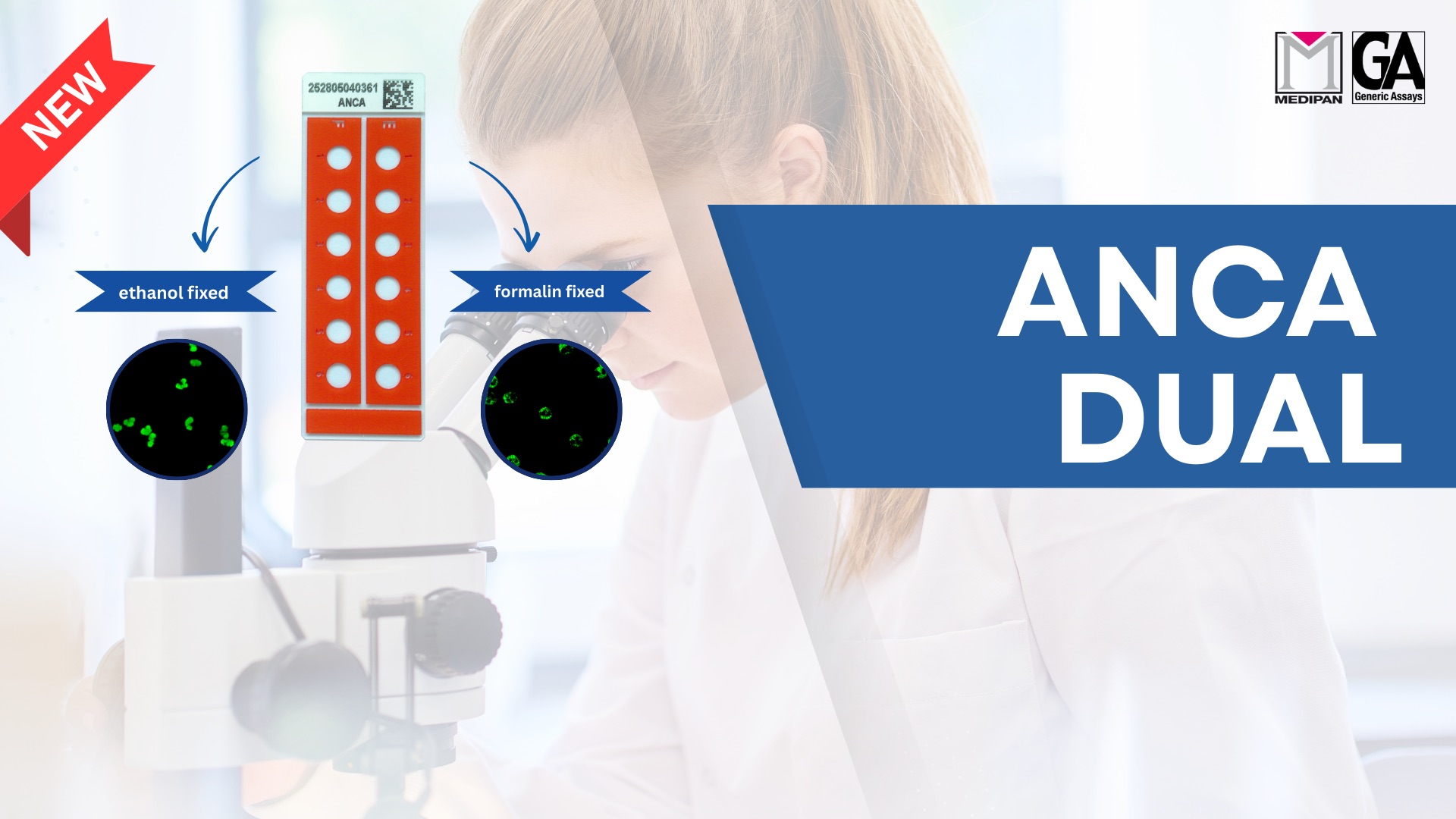
New Study Highlights the Diagnostic Power of CytoBead ANA 2

We are pleased to share the results of a newly published peer-reviewed study in Scientific Reports that demonstrates the diagnostic performance of the CytoBead® ANA 2 assay1.
In clinical diagnostics, the detection of antinuclear antibodies (ANA) is crucial in identifying systemic autoimmune rheumatic diseases (SARDs). Traditional diagnostics use a two-step process. First, ANA screening by IFA on HEp-2 cells. hen, confirmatory testing identifies specific autoantibodies. However, this traditional approach can be time-consuming and costly. Moreover, results may vary due to human interpretation.
Study Results for CytoBead® ANA 2 and ANA DFS-70
The study at Sheba Medical Center analyzed 112 routine serum samples using CytoBead® ANA 2. Researchers compared the results with conventional ANA IFA from Inova-Werfen and the BioPlex™ 2200 multiplex assay from Bio-Rad.
The findings are compelling:
- Substantial agreement was found between CytoBead® ANA 2 and classical ANA IFA (Cohen’s κ = 0.74), with notable cases where CytoBead ANA 2 detected specific autoantibodies in ANA IFA-negative samples.
- Good to almost perfect agreement was observed between CytoBead® ANA 2 and the multiplex assay for ANA-specific autoantibody detection (κ values from 0.70 to 0.90).
- CytoBead® ANA 2 identified autoantibodies including anti-SS-A/Ro, anti-dsDNA, and anti-Sm in clinically relevant cases missed by conventional IIF.

HEp-2 nuclear speckled patter for anti-SS-A/Ro antibodies
Additionally, the study also validated the CytoBead® Technology variant CytoBead® ANA DFS-70 for distinguishing the dense-fine speckled (DFS) pattern often seen in healthy individuals. CytoBead® ANA DFS-70 successfully detected 100% of anti-DFS70-positive samples confirmed by BIO-FLASH® (Inova-Werfen). In ANA-positive patients without SARDs, the assay confirmed anti-DFS70 antibodies in 68.9% of those showing a DFS pattern, underscoring its effectiveness in ruling out SARDs and minimizing unnecessary follow-up testing.
Conclusion
This publication confirms that CytoBead® Technology offers a powerful, one-step alternative to the conventional two-tier ANA testing workflow. By combining ANA screening and confirmatory testing in a single reaction, the CytoBead® Technology streamlines diagnostics, reduces costs, and enhances result reliability.
At Medipan & GA Generic Assays, we remain committed to providing innovative solutions that improve autoimmune diagnostics. We invite laboratories and clinicians to explore how available CytoBead® Technology dedicated to the ANA determination and how it can transform their ANA testing strategy.
Related products
| IFA for standard microscope | 8065 – CytoBead® ANA | Determination of IgG antibodies in human serum against nuclear and cytoplasmic antigens, using slides coated with HEp-2 cells and beads coated with dsDNA, Scl-70, SS-A/Ro60, SS-A/Ro52, SS-B, Sm, and Sm/RNP, and CENP-B. |
| IFA for akiron®NEO | 4272 – AKLIDES® CytoBead® ANA |
| IFA for standard microscope | 8220 – CytoBead® ANA 2 | Determination of IgG antibodies in human serum against nuclear and cytoplasmic antigens, using slides coated with HEp-2 cells and beads coated with dsDNA, Scl-70, SS-A/Ro60, SS-A/Ro52, SS-B, Sm, and Sm/RNP, and Jo-1. |
| IFA for akiron®NEO | 4277 – AKLIDES® CytoBead® ANA 2 |





